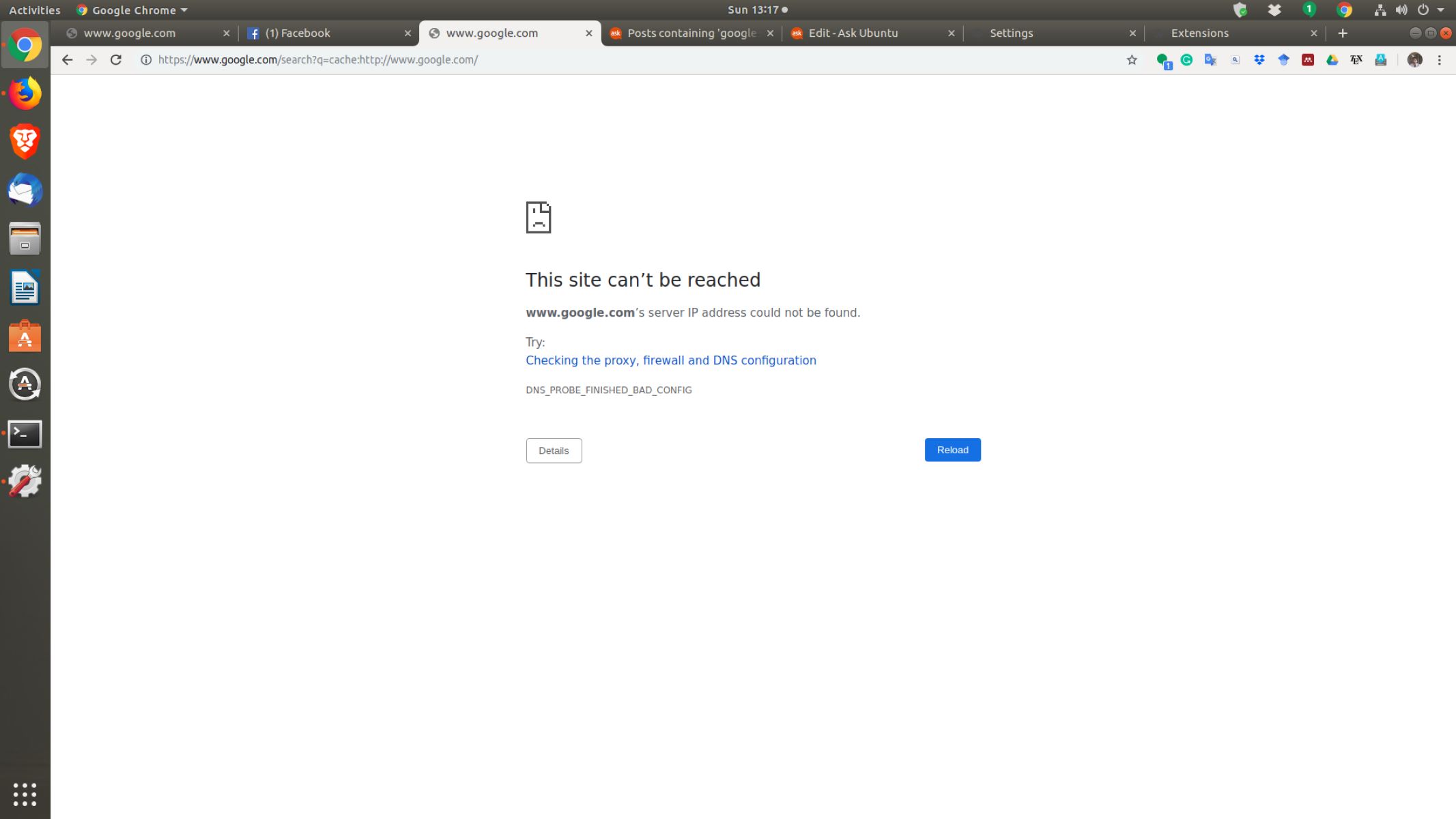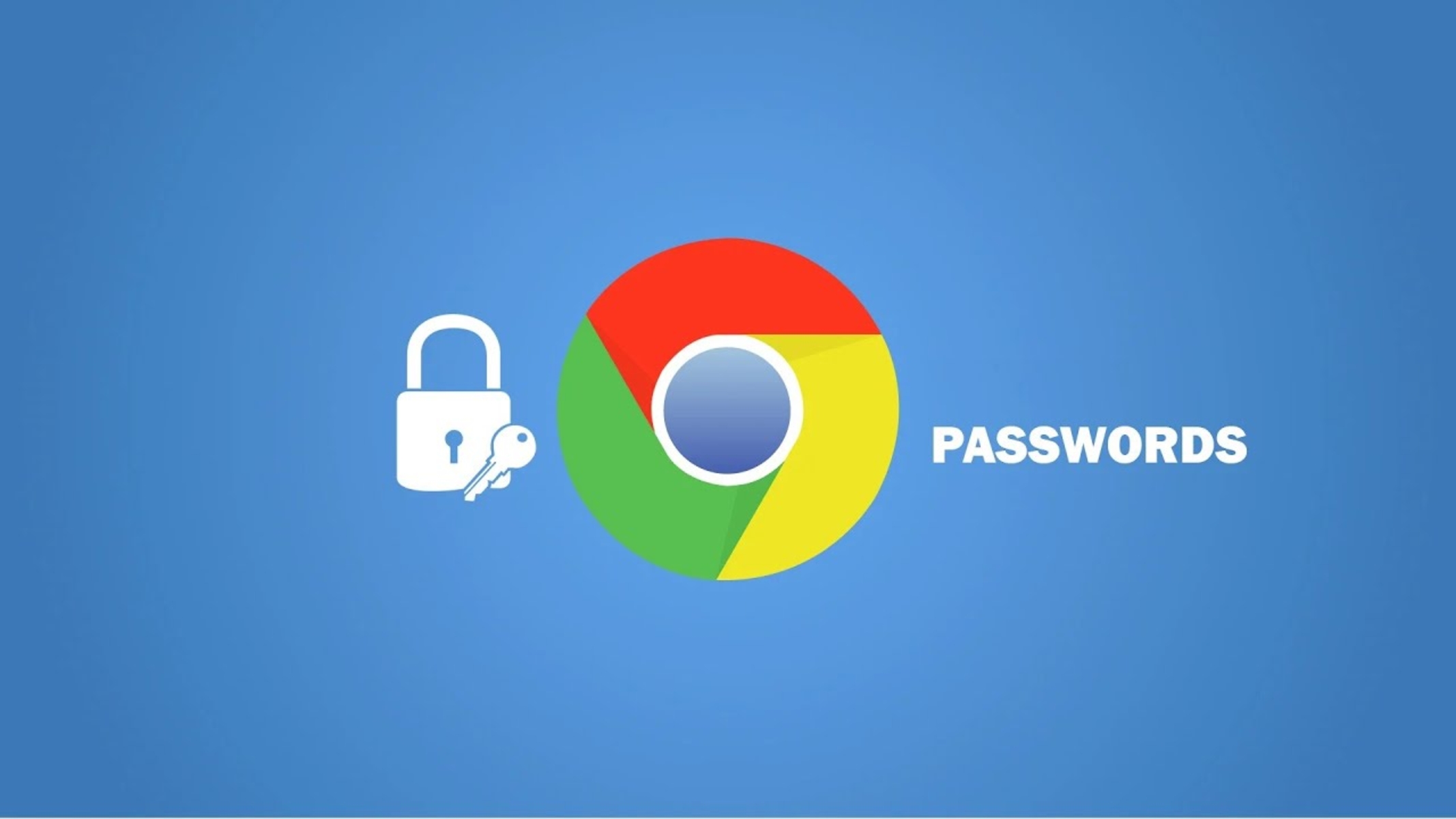Introduction
Having a browser that is not working properly can be frustrating and disruptive to our daily activities. Whether we use it for work, entertainment, or simply browsing the web, a malfunctioning browser can hinder our productivity and dampen our online experience. It’s important to understand the possible reasons behind this issue and learn how to troubleshoot and resolve it.
In this article, we will explore the common causes of browser malfunction and provide step-by-step solutions to help get your browser back on track. From clearing cache and cookies to checking for browser updates, we will cover various troubleshooting techniques that can address a wide range of browser issues.
It’s worth noting that different browsers may have slightly different settings and options, so the steps provided here may vary depending on the browser you are using. However, the general principles and troubleshooting methods discussed in this article should apply to most popular browsers, such as Google Chrome, Mozilla Firefox, and Microsoft Edge.
By following the tips and techniques outlined in this article, you will be equipped with the knowledge to diagnose and resolve common browser problems. So, let’s dive in and learn how to get your browser up and running smoothly again!
Possible Reasons for Browser Malfunction
When your browser starts acting up, there can be several underlying causes behind its malfunction. Understanding these possible reasons can help you diagnose and address the issue more effectively. Here are some common factors that can contribute to browser problems:
- Outdated browser version: Using an outdated version of your browser can lead to compatibility issues with websites and cause performance problems.
- Corrupted cache and cookies: Over time, your browser’s cache and cookies can accumulate invalid or corrupted data, causing conflicts and hindering its functionality.
- Conflicting browser extensions: Certain browser extensions or add-ons can conflict with each other or with the browser’s default settings, leading to crashes or instability.
- Network connectivity issues: Unstable or slow internet connections can interfere with the proper functioning of your browser, resulting in slow loading times or frequent disconnects.
- Incompatible browser settings: Configurations and settings within your browser, such as security settings or proxy configurations, can sometimes interfere with the normal operation of websites.
- Presence of malware or viruses: Malicious software or viruses can infiltrate your system and affect your browser’s performance, causing redirects, pop-ups, or other unwanted behavior.
It’s important to note that these are just some of the possible reasons for browser malfunction. In some cases, the issue may be specific to a particular website or web service, rather than the browser itself.
Now that we have explored the possible reasons behind browser malfunction, let’s move on to the next section, where we will discuss how to resolve these issues by clearing cache and cookies.
Clearing Cache and Cookies
Over time, your browser’s cache and cookies can accumulate temporary data that can cause conflicts and hinder its performance. Clearing the cache and cookies can often resolve issues such as slow loading times, display inconsistencies, and website errors. Here’s how you can clear cache and cookies in most popular browsers:
Google Chrome:
- Click on the three-dot menu in the top-right corner and go to “Settings”.
- Scroll down and click on “Advanced” to expand the advanced settings.
- Under the “Privacy and security” section, click on “Clear browsing data”.
- Select the appropriate time range and make sure “Cookies and other site data” and “Cached images and files” are checked.
- Click on “Clear data” to clear the cache and cookies.
Mozilla Firefox:
- Click on the three-line menu in the top-right corner and go to “Options”.
- Click on “Privacy & Security” in the left-hand menu.
- Under the “Cookies and Site Data” section, click on “Clear Data”.
- Make sure “Cookies” and “Cached Web Content” are checked.
- Click on “Clear” to clear the cache and cookies.
Microsoft Edge:
- Click on the three-dot menu in the top-right corner and go to “Settings”.
- Scroll down and click on “Privacy, search, and services” in the left-hand menu.
- Under the “Clear browsing data” section, click on “Choose what to clear”.
- Make sure “Cookies and other site data” and “Cached images and files” are checked.
- Click on “Clear” to clear the cache and cookies.
After clearing the cache and cookies, restart your browser and see if the issue has been resolved. If the problem persists, move on to the next troubleshooting step.
In the next section, we will discuss the importance of checking for browser updates and how to perform the update process.
Checking for Browser Updates
Keeping your browser up to date is crucial for ensuring optimal performance and compatibility with the latest web technologies. Browser updates often include bug fixes, security patches, and enhancements that can address common issues and improve overall stability. Here’s how you can check for and install updates in popular browsers:
Google Chrome:
- Click on the three-dot menu in the top-right corner and go to “Settings”.
- In the left-hand menu, click on “About Chrome”.
- Chrome will automatically check for updates and install them if available.
- Restart the browser to complete the update process.
Mozilla Firefox:
- Click on the three-line menu in the top-right corner and go to “Options”.
- In the left-hand menu, click on “General”.
- Scroll down to the “Firefox Updates” section.
- Click on “Check for updates” and follow the prompts to install any available updates.
- Restart the browser to complete the update process.
Microsoft Edge:
- Click on the three-dot menu in the top-right corner and go to “Settings”.
- In the left-hand menu, click on “About Microsoft Edge”.
- Edge will automatically check for updates and install them if available.
- Restart the browser to complete the update process.
After updating your browser, check if the malfunctioning issue still persists. If it does, proceed to the next troubleshooting step.
In the next section, we will explore the option of disabling browser extensions to identify and resolve conflicts.
Disabling Browser Extensions
Browser extensions can enhance your browsing experience by providing additional features and functionality. However, these extensions can sometimes conflict with each other or with the browser itself, leading to performance issues and malfunctions. Disabling or removing problematic extensions can help identify the culprit and resolve the problem. Here’s how you can disable extensions in popular browsers:
Google Chrome:
- Click on the three-dot menu in the top-right corner and go to “More Tools”.
- Hover over “Extensions” and click on it to access the extensions menu.
- To disable an extension, click on the toggle switch next to it to turn it off.
Mozilla Firefox:
- Click on the three-line menu in the top-right corner and go to “Add-ons”.
- In the left-hand menu, click on “Extensions”.
- To disable an extension, click on the toggle switch next to it to turn it off.
Microsoft Edge:
- Click on the three-dot menu in the top-right corner and go to “Extensions”.
- Find the extension you want to disable and click on the gear icon.
- Click on “Remove” or toggle off the switch to disable the extension.
After disabling the extensions, restart your browser and check if the malfunctioning issue still persists. If the problem is resolved, you can re-enable the extensions one by one to identify the specific extension causing the problem.
If disabling extensions did not resolve the issue, proceed to the next troubleshooting step.
In the following section, we will discuss troubleshooting techniques related to network connection issues.
Troubleshooting Network Connection
A stable and reliable network connection is essential for seamless browsing. If you are experiencing browser malfunctions, it’s important to address any potential network issues that may be causing the problem. Here are some troubleshooting steps you can take:
- Check your internet connection: Ensure that your device is connected to the internet and that the connection is stable. Try accessing other websites or streaming services to verify if the issue is specific to your browser.
- Restart your modem and router: Power cycling your networking equipment can resolve temporary connectivity issues. Turn off your modem and router, wait for a few seconds, and then turn them back on.
- Disable VPN or proxy: If you are using a Virtual Private Network (VPN) or proxy server, try disabling them temporarily to see if they are causing any conflicts with your browser.
- Reset your DNS settings: Flushing the DNS cache or resetting your DNS settings can resolve DNS-related issues. Open the command prompt (Windows) or terminal (Mac), then enter the appropriate command based on your operating system to reset the DNS settings.
- Switch to a different network: If possible, try connecting to a different Wi-Fi network or use a wired Ethernet connection to determine if the issue is specific to your current network.
After troubleshooting your network connection, check if the browser malfunction still persists. If the issue remains, move on to the next troubleshooting step.
In the next section, we will discuss how to adjust browser settings to resolve common issues.
Adjusting Browser Settings
Browser settings play a crucial role in determining how your browser performs and interacts with websites. Sometimes, tweaking certain settings can help resolve browser malfunctions. Here are some adjustments you can make to your browser settings:
- Reset browser settings: Most browsers provide the option to reset all settings to their default values. This can help resolve issues caused by misconfigured settings or conflicting preferences. Look for the “Reset” or “Restore Defaults” option in your browser’s settings menu.
- Disable hardware acceleration: Hardware acceleration can sometimes cause issues with certain graphics-intensive websites or applications. Disabling this feature can help resolve display issues. Look for the hardware acceleration option in the settings menu of your browser and toggle it off.
- Enable JavaScript and cookies: Some websites rely on JavaScript and cookies to function properly. Check that these features are enabled in your browser settings. Look for the “Privacy and Security” or “Content Settings” options in your browser’s settings menu.
- Manage pop-up settings: Pop-up windows can disrupt your browsing experience and sometimes indicate malicious behavior. Adjust your browser’s pop-up settings to allow or block pop-ups as desired. Look for the pop-up settings in your browser’s settings menu.
- Disable browser plugins: Some plugins or plugins that are out of date can cause compatibility issues or security vulnerabilities. Disable unnecessary or problematic plugins in your browser settings.
After adjusting your browser settings, restart your browser and check if the malfunctioning issue has been resolved. If not, proceed to the next troubleshooting step.
In the next section, we will discuss the importance of checking for malware or viruses and how to address such issues.
Checking for Malware or Viruses
Malware or viruses can significantly impact your browser’s performance and compromise your online security. It is essential to regularly scan your system for potential threats and ensure that your browser is not affected. Here are some steps you can take to check for malware or viruses:
- Use reputable antivirus software: Install and regularly update a reliable antivirus program. Perform a thorough scan of your system to detect and remove any malware or viruses that may be affecting your browser.
- Run a malware scan: In addition to antivirus software, consider using dedicated anti-malware tools to scan your system specifically for malware or potentially unwanted programs (PUPs). These tools can provide an extra layer of protection and help identify browser-related threats.
- Be cautious with downloads and websites: Avoid downloading files or visiting websites that appear suspicious or untrustworthy. Exercise caution when clicking on links or downloading files, as these can be an entry point for malware or viruses.
- Update your operating system: Keeping your operating system (such as Windows or macOS) up to date is crucial for security. Regular updates often include patches that address known vulnerabilities, reducing the risk of malware infection.
- Enable browser security features: Check that your browser’s built-in security features, such as phishing protection and safe browsing, are enabled. These features can help detect and block potentially harmful websites or downloads.
By regularly checking for malware or viruses and taking appropriate actions to mitigate any risks, you can help ensure a safer browsing experience and reduce the likelihood of browser malfunctions.
If scanning for malware or viruses did not resolve the issue, continue to the next troubleshooting step.
In the next section, we will discuss the option of reinstalling or resetting your browser as a last resort.
Reinstalling or Resetting the Browser
If all the previous troubleshooting steps have failed to resolve the browser malfunction, reinstalling or resetting the browser can be a viable solution. This step should be taken as a last resort, as it will remove all your personalized settings and data. Here’s what you can do:
Reinstalling the Browser:
- Uninstall the current browser from your system through the control panel or applications folder.
- Download the latest version of the browser from the official website.
- Follow the installation instructions and complete the setup process.
Resetting the Browser:
Note that resetting the browser will restore it to its default state, removing all extensions, settings, and stored data. Make sure to backup any important data before proceeding.
- Open your browser’s settings and find the reset or restore option.
- Confirm the reset action and follow the on-screen prompts to proceed.
- Restart the browser once the reset process is complete.
Reinstalling or resetting the browser can help resolve persistent issues and restore it to a clean state. Remember to reinstall any necessary extensions or plugins and reconfigure your preferred settings after the process.
If the browser still exhibits malfunctions even after reinstalling or resetting, there may be deeper system or hardware issues at play. In such cases, seeking technical support or consulting with a professional may be necessary.
Now that we have explored the troubleshooting techniques for resolving browser malfunctions, let’s conclude the article with a summary of the key points discussed.
Conclusion
Dealing with a malfunctioning browser can be frustrating, but with the right troubleshooting techniques, you can get it back on track and enjoy a smooth browsing experience once again. In this article, we explored several common reasons behind browser malfunctions and provided step-by-step solutions to address them.
We started by discussing the importance of clearing cache and cookies, which can often resolve issues related to slow loading times and display inconsistencies. We then moved on to checking for browser updates and disabling conflicting browser extensions, both of which can help resolve compatibility issues and improve browser stability.
Troubleshooting network connection issues is also crucial, as an unstable or slow internet connection can interfere with your browsing experience. By following the steps outlined in the article, you can identify and resolve common network-related problems.
Adjusting browser settings, such as resetting them or disabling certain features, can also help address browser malfunctions. Additionally, checking for malware or viruses and taking appropriate measures to mitigate any risks is essential for maintaining a secure browsing environment.
If all else fails, reinstalling or resetting the browser can provide a fresh start and potentially resolve persistent issues. However, keep in mind that this step should be taken as a last resort, as it will remove all personalized settings and data.
Remember, different browsers may have slightly different settings and options, so adapt the troubleshooting steps accordingly. As you navigate through the process, be patient, and seek further technical support or professional assistance if necessary.
By following the strategies outlined in this article and applying the troubleshooting techniques, you will be well-equipped to overcome browser malfunctions and enjoy a seamless browsing experience.

























